2023 | Competition
Breaking the Chains
For 2023, Artistic Director Carlo Chatrian and Head of Programming Mark Peranson promise a highly emotional Competition. In the interview, they also talk about the weight of reality, the necessary balance between established directors and new faces, alongside crisis-ridden father figures in this year's selection.
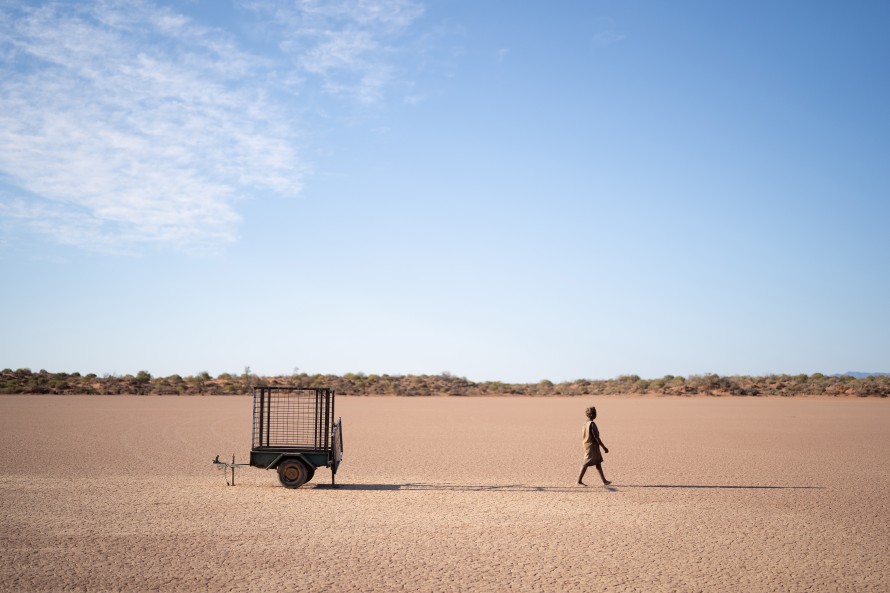
Mwajemi Hussein in The Survival of Kindness by Rolf de Heer
The world is in transition. Crises, conflicts, crumbling authoritarian regimes and an unbroken will to assert oneself and resist often determine the picture. How is this loss of security reflected in the programme and the festival?
The pandemic has produced a stronger sense of isolation and moving images have helped us to connect with each other and with the world outside. Then the war entered this picture with the force of a hurricane. But that is still – and believe us, we are not happy in saying so – an image. It is only closer to us and therefore we are more concerned, moved – but we wouldn’t say insecure. We still go out to restaurants, we plan our holidays, we go to the cinema… More than usual, the films we have watched in the past year carried the weight of the reality. Or maybe the films that did so were the ones that caught our interest. In both cases, the line-up this year, not only the Competition but throughout the festival as a whole, is more closely related with films that refer to real events – be they in the recent past or at the present time.
The programme impresses above all with its wealth of forms. Documentary, feature and animated films are competing together for the Bears. How do you explain this diversity?
The Competition and the general Berlinale line-up have always been a home for very diverse kind of films. So for us, the eclectic selection we have this year is no surprise. For sure, if we compare this line-up to the previous editions, this year we have made a wider offer. We have a number of films from East Asia, countries that were missing in the year before, and we have a stronger presence from the US, which leads also to a variety in genres as these countries have a production system based on popular entertainment that appeals to a wider audience.
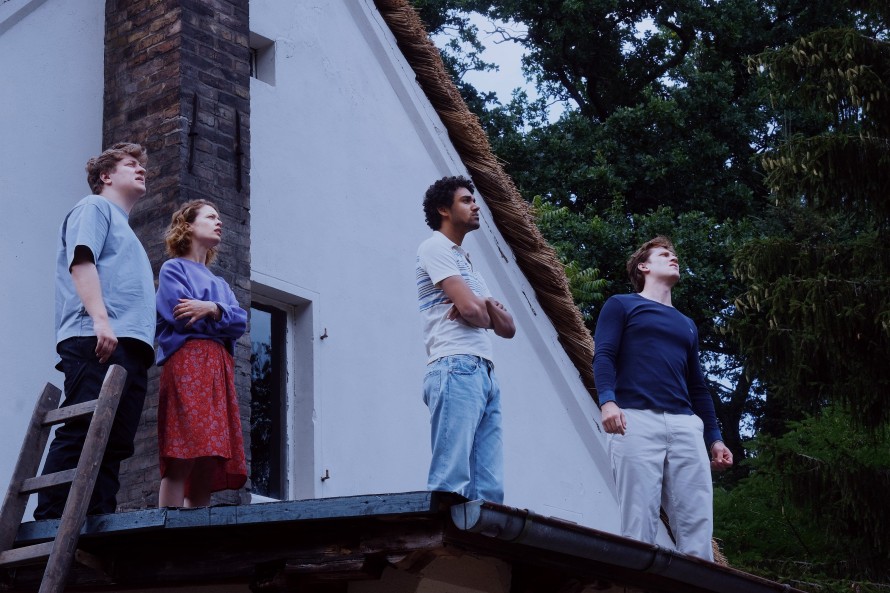
Thomas Schubert, Paula Beer, Langston Uibel and Enno Trebs in Roter Himmel by Christian Petzold
Last year you described the programme as a permanent dialogue with the audience and stressed how important it is to continue to follow the development of experienced directors who have already been to the Berlinale several times. How is the relationship between "old acquaintances" and new faces this year?
This year we have given more room to fresh news voices. We have three debut feature-length films and other young filmmakers who are for the first time in our Competition. This is not something we have planned in advance, but the result of the selection process and how the films have resonated with us. That said, with established filmmakers such as Christian Petzold, Philippe Garrel, Margarethe von Trotta and Rolf de Heer, the balance is very much in place – which is important as these filmmakers are the existing link with the history of cinema that the Berlinale stands for. It is impossible to move ahead without having a sense of where we come from. And while we are happy when the Berlinale is associated with youth, this should still happen within the bigger picture of a well-balanced selection.
With Angela Schanelec, Christian Petzold and Christoph Hochhäusler, you have three protagonists of the “Berliner Schule” (Berlin School) in the programme. How has this movement changed over the years, do its representatives still have things in common?
What is behind this label is not clear to us – to be honest. The mentioned filmmakers have quite peculiar styles and very different ways of making films and conceiving cinema. It is more interesting to take them individually and see how their work has evolved over the years. In that respect, they seem among the best example of “auteurs” – as the elements that pass from film to film are stronger than what distinguishes them. The new films by Schanelec, Hochhäusler and Petzold are a further step in a process that wants to define an aesthetic of what is a film and how can we tell stories in the present time.
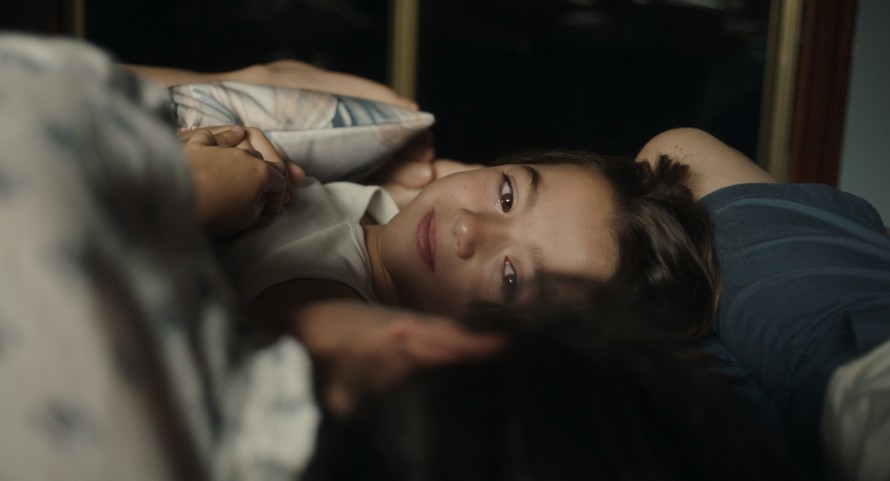
Sofia Otero in 20.000 especies de abejas by Estibaliz Urresola Solaguren
Last year you also emphasised the humour in the films. How would you describe the tonality of this year's Competition?
It is always difficult and provisional to give indications of how the films will be received by the audience. Also, this feeling can change for each viewer and over the days of the screenings. The emotional side of films seems quite strong this year, and probably there will be few dry eyes in the Berlinale Palast! In a very eclectic selection, melodramas are probably the most consistent thread. We have also more films than usual featuring children, and in three of them - Suzume, 20.000 especies de abejas and Tótem - young girls are in the lead.
Coming of age plays a big role at the Berlinale this year - also with a view to the Retrospective. The story of Lucia/Aitor in 20.000 especies de abejas sounds like a very special CoA story. At the same time, the film tells the story of women from three generations. For you, is CoA limited to a certain period in life - childhood/adolescence - or can older generations still go through these special moments that shape a life/personality?
It is true that all the women in 20.000 especies de abejas have their own issues they need to resolve, and, in effect, go through their own “coming of age” process. As we also see in the films of the Retrospective, the process of coming of age is not restricted to young children, or even teenagers (such as in Emily Atef’s Irgendwann werden wir uns alles erzählen), but for many characters it is a process that can occur at any time in life due to personal or social intrusions. Art College 1994 by Liu Jian, set at a university, shows its protagonists trying to find new personal and political identities due to the opening up of China to Western influences in the 1990s. The grown-up members of the puppet troupe in Philippe Garrel’s Le grand chariot perform for children, but have to confront personal and work-related crises which transform them into more refined adults. And though the protagonist-author of Christian Petzold‘s Roter Himmel has already one novel to his credit, what he goes through over the course of the film certainly makes him a more mature, well-rounded individual.
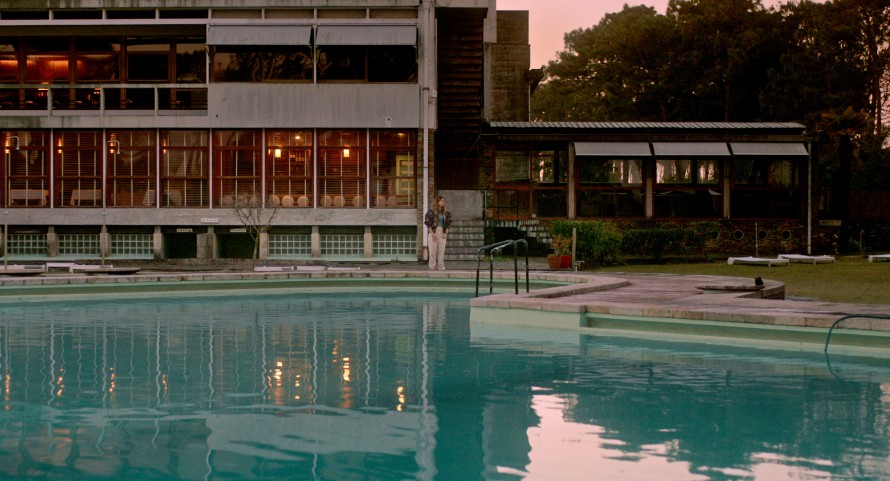
Cleia Almeida in Mal Viver by João Canijo
Spaces in the sense of built space seem to play a leading role in the programme: The day-care centre in Sur l'Adamant, the hotel in Mal Viver, the house in Tótem . Are there other examples?
Interesting. We haven’t thought about that. Also in Roter Himmel the summer house by the sea plays a relevant role, the hotel in Limbo by Ivan Sen is important to the psychology of the detective, and the work with architecture - as always with Hochhäusler - is very central in Bis ans Ende der Nacht. That said, it seems like – if we exclude Mal Viver – that in all other cases, the built space is not the place of security but rather of an exchange. The day-care centre (Sur l’Adamant), the houses (Tótem, Irgendwann werden wir uns alles erzählen) and the offices (in BlackBerry) become places where people from outside step in. This also is starting point of Roter Himmel, when the protagonist finds out that the house he wanted to use as a work refuge is already occupied. Private space doesn’t exist anymore, but rather is a space for negotiation – but this is not a bad sign – at least not in the films we have selected.
Father figures swarm through the programme. Philippe Garrel brings his children in front of the camera, Music is about a patricide, the protagonist in Bai Ta Zhi Guang goes in search of his father, the FATHER as a figure in crisis with no way out is seen quite massively in Manodrome. What lines of flight/associations arise for you from this diversity?
Fatherhood has always been a very present topic in cinema. In all the films mentioned – plus Tótem, Suzume, Disco Boy, Limbo -- the father is a missing or incomplete figure. He is absent, either already gone or about to go. This also brings to mind the return of the father in the debut film Xue yun by Wu Lang in Encounters. The Father is no longer the pillar upon which you can create your identity – but rather something you have to deal with in opposition, like in 20.000 especies de abejas, or in a similar symbolic way regarding the father figure in BlackBerry by Matt Johnson. I guess this represents a common thread that is quite present in the XXI century. There’s an unconscious desire to break with our past. To start anew.
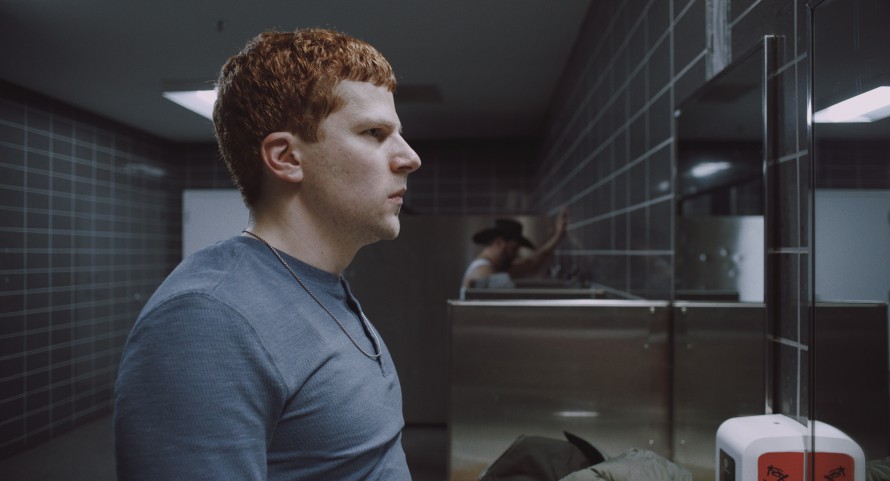
Jesse Eisenberg in Manodrome by John Trengove
Art plays a significant role in the lives of the characters in the programme. The music in Disco Boy and Music, literature in Roter Himmel, Irgendwann werden wir uns alles erzählen and Ingeborg Bachmann – Reise in die Wüste , the puppet shows in Le grand chariot. Can it offer a stable, secure counter-design to the world outside?
We have one film that carries the word “Art” in its title. Art College 1994 is all about art and the role art can and should have in one’s life. But this is true also in a more general way: there is a strong presence of characters related to the art world in the films selected, such as von Trotta’s film about Ingeborg Bachmann and Max Frisch – and even some that don’t have anything to do with art have an artistic attitude. The nerds in BlackBerry are crazy for movies, the teenaged protagonist in Irgendwann werden wir uns alles erzählen reads Dostoyevsky and her young lover is a photographer, the mother in 20.000 especies de abejas is an artist suffering the weight of her father’s legacy, the lead of Past Lives is a playwright in training… The reasons of that are multiple. Art can be therapeutic like in a beautiful scene in Nicolas Philibert’s documentary Sur l’Adamant. Even when its presence is not so structured, it is also a quite natural and important thing that art plays a crucial role in helping them people move beyond the flows of daily existence.
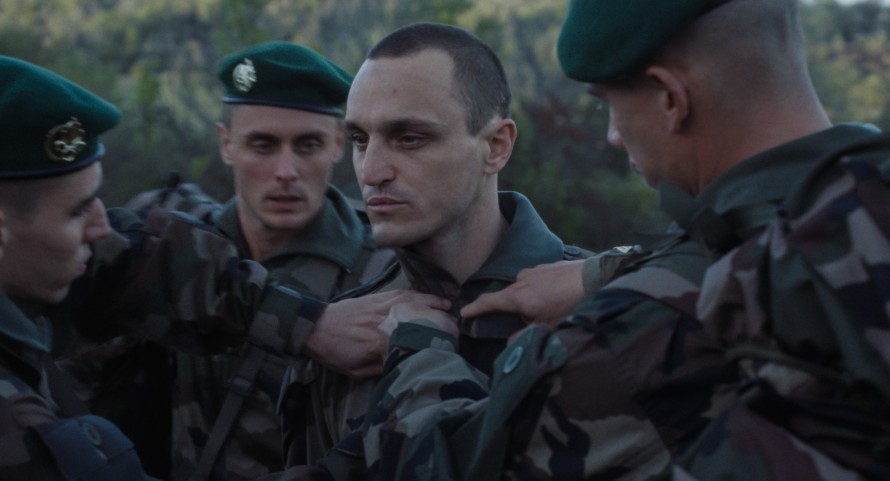
Franz Rogowski in Disco Boy by Giacomo Abbruzzese
The motif of being trapped appears in various films. Quite clearly in The Survival of Kindness, the protagonist in Music ends up in prison, the characters in Roter Himmel are trapped by a conflagration. Other characters are desperately looking for ways out, like Aleksei in Disco Boy, or Ralphie in Manodrome -, both seem to escape into a frenzy of dissociation. How do you see this relationship, or can these two states be put into a relationship at all?
Along with the cage literally trapping the woman at the beginning of The Survival of Kindness, in Encounters we have one film called The Cage Is Looking for a Bird (original title: Kletka ishet ptitsu). If we look at the mentioned films though, we see the opposite desire: to break through. Aleksei (played by Franz Rogowski) in Disco Boy is probably the best example of that. But really this year’s selection is filled with characters that are in constant movement. The young father in Manodrome and the teenagers in Suzume. Ingeborg Bachmann, the students in Art College 1994 and the femme fatale in Bis ans Ende der Nacht, even the detective protagonist of Limbo… All these people are in a fight to break free of the chains that society has put on them.